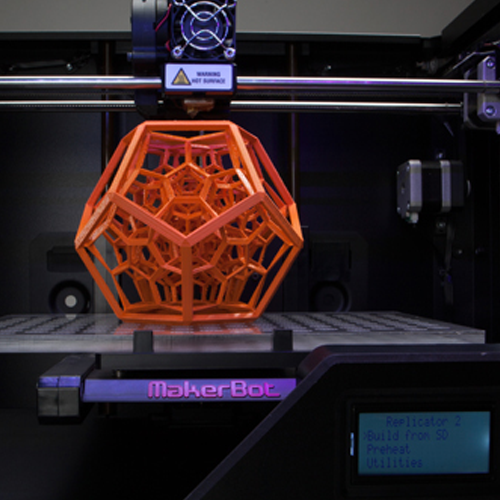3D printing is disrupting t raditional manufacturing and may be the catalyst for the next industrial revolution. It’s moving beyond making prototypes, molds and tooling into the customization of end-use parts for applications ranging from aerospace, medical, automotive, consumer products, architecture and electronics.
raditional manufacturing and may be the catalyst for the next industrial revolution. It’s moving beyond making prototypes, molds and tooling into the customization of end-use parts for applications ranging from aerospace, medical, automotive, consumer products, architecture and electronics.
Shapeways, an online service provider for personalized 3D printed products, has created more than 100 jobs in the last two years and helped fuel the birth of many new small businesses. Shapeways makes it possible for anyone—from designers to niche 3D modelers—to start a business.
Experts predict that the consumer market will account for 60 percent of the total estimated 3D printing market. 3D printing entrepreneurs have a huge opportunity to create thriving, sustainable businesses. In addition to toys, furniture and other applications, jewelry is an example of how 3D is disrupting a consumer sector.
A Case Study
 President of American Pearl, Eddie Bakhash, is a second generation jeweler. He’s expanding the family business founded 50 years ago from its physical processes and location in New York’s Diamond District—to 3D printing and ecommerce. Bakhash aims to shake up the $275 billion industry using a combination of proprietary computer-aided design (CAD) software and a Solidscape T-76 3D printer.
President of American Pearl, Eddie Bakhash, is a second generation jeweler. He’s expanding the family business founded 50 years ago from its physical processes and location in New York’s Diamond District—to 3D printing and ecommerce. Bakhash aims to shake up the $275 billion industry using a combination of proprietary computer-aided design (CAD) software and a Solidscape T-76 3D printer.
His customers can personalize their own designs and have their jewelry produced and delivered in four days. “We’re empowering consumers to customize their jewelry, with the same high quality gems and materials as our competitors but at a third of the cost. There are thousands of designs and combinations. We have more jewelry for sale than Tiffany’s,” says Bakhash.
American Pearl’s CAD/CAM software platform then outputs a digital file taking human error out of the equation. The company produces a 3D printed model of the jewelry made of thermoplastic wax and pours the chosen metal into a digitally-designed, precisely-proportioned mold. Once it hardens, the gemstones are set by a jeweler. The company also can recreate a lost family heirloom. Just click on ‘Jewelry Replicator,’ upload a photo and voila, a 3D digital model and an authentic piece of jewelry can be created. Its 3D process streamlines inventory and workflows, and eliminates most of the labor costs and margins for error in high-end jewelry designs so it can deliver luxury jewelry for a fraction of the cost at high-end stores.

